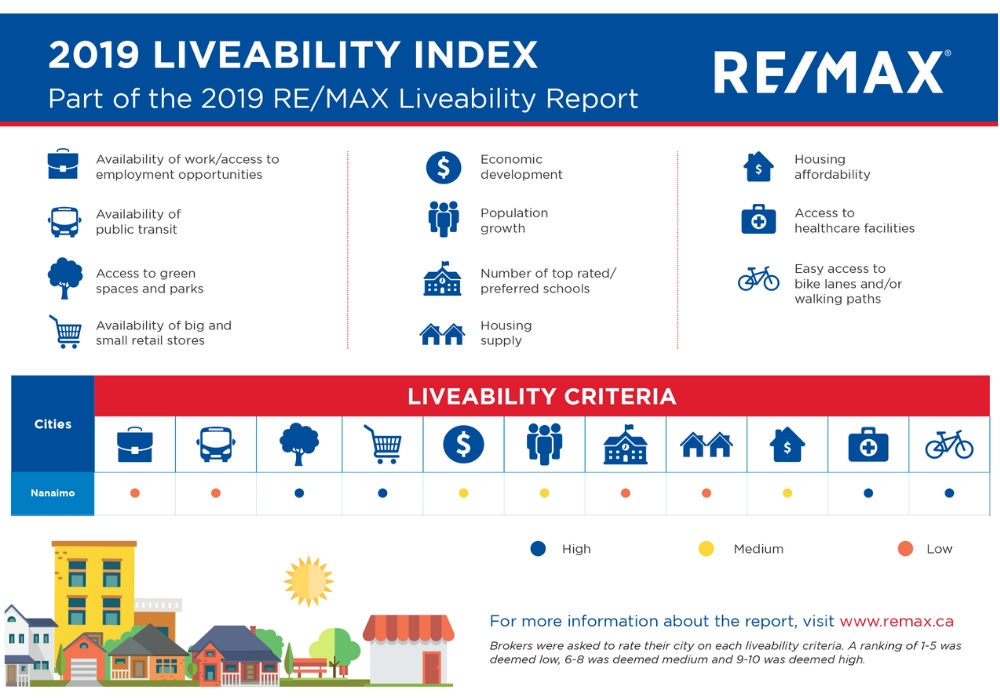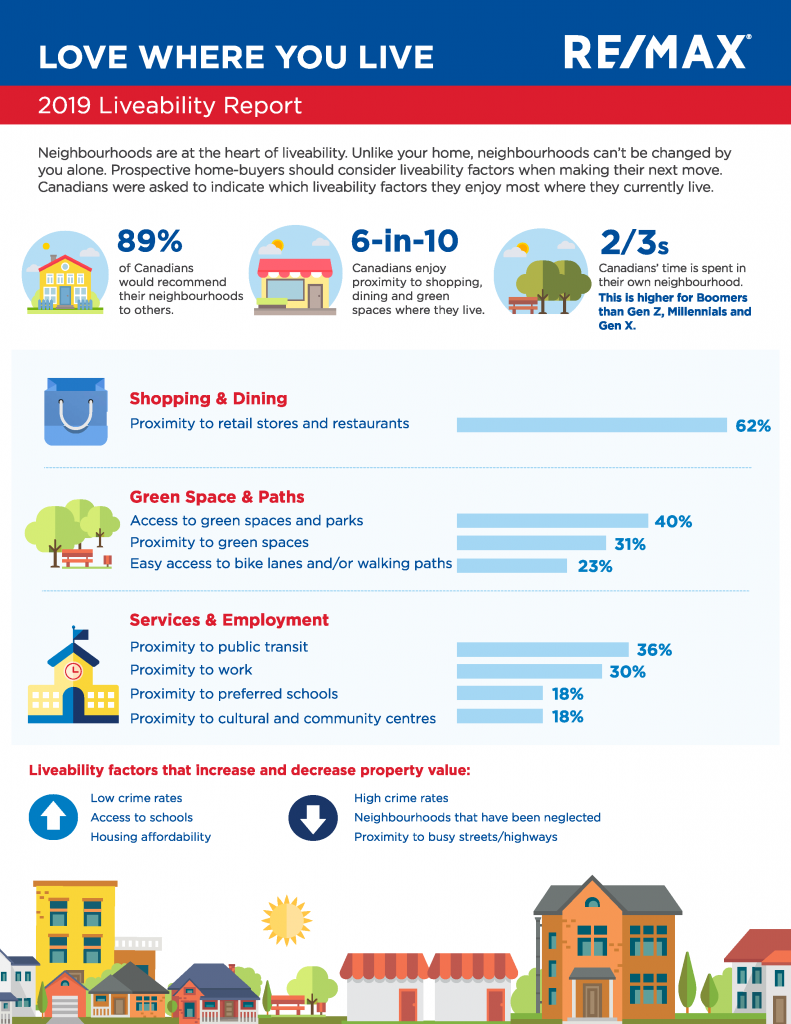
-
This Livability Report examines the best places to live in Nanaimo.
-
A variety of life factors and how they impact how Canadian’s process home buying.
-
Proximity and availability is so important that Canadians spend more than two-thirds of their time in their own neighbourhood.
Livability in Nanaimo
It’s no wonder that Lower Lantzville, North Nanaimo and Departure Bay rank as the top three neighbourhoods for access to green spaces and parks, walkability, retail and restaurants and the ease of getting around/public transit.
- TOP HIDDEN GEM: Lower Lantzville
- AFFORDABILITY: Central Nanaimo, Uplands and Diver Lake plus a good supply of housing inventory.
Canadians Love Where They Live
- 89 per cent of Canadians would recommend their neighbourhoods to others
- Major Canadian cities are a beacon for liveability
Canadians genuinely celebrate liveability factors. The qualities that give each homeowner the true satisfaction of his or her home within the context of a neighbourhood. Especially when it comes to choosing a property to buy and live in. 89 per cent of Canadians would recommend their neighbourhood to others according to a recent RE/MAX survey conducted by Leger.
The latest RE/MAX report examined a variety of quality of life factors and how they impact Canadians’ home-buying decisions.
“Housing is often a contentious topic in Canada, with affordability and inventory being persistent problems from coast to coast,” says Christopher Alexander, Executive Vice President, RE/MAX of Ontario-Atlantic Canada. “However, when buyers are looking for a home, the search begins at the neighbourhood level. And the good news is that Canadians have lots of choice when it comes to ‘liveable’ cities and neighbourhoods.”
Top Liveability Factors for Canadians
Six-in-10 Canadians put easy access to shopping, dining and green spaces at the top of their liveability criteria. Proximity to:
- 36% public transit
- 30% work
- 18% preferred schools
- 18% cultural and community centres fall out of the top five neighbourhood wants and expectations.
The proximity and availability of these liveability factors is so important that Canadians spend more than two-thirds of their time in their own neighbourhood. This rate is higher among Baby Boomers compared to Gen Z, Millennial and Gen X Canadians.
“While price and value are always top of mind for buyers, there are some aspects about a home that you can’t change,” says Alexander. “These liveability factors are what make your home more than just the place you live. They are at the heart of the Canadian experience, especially when you consider the survey results.”
RE/MAX brokers were also asked to tap into their neighbourhood expertise and rate their city on each liveability factor.
Vancouver Livability
Vancouver ranked medium for availability of big and small retail stores, population growth and housing supply. However, it ranked high in availability of public transit, where the Skytrain and bus system prove exceptional; and walkability, especially in Yaletown. Main, West End and Kerrisdale are the top three all-around liveable neighbourhoods in Vancouver while Mount Pleasant, Downtown and Renfrew-Collingwood are the most affordable.
Other regions include Ottawa, where The Glebe neighbourhood is the best for walkability and public transit; Halifax, where Clayton park boasted high inventory; Hamilton, where Beasley was best for affordability; Winnipeg, where Transcona is a hidden gem neighbourhood; Saskatoon, where Nutana is the all-around best neighbourhood for liveability; and Nanaimo, where Central Nanaimo is best for affordability.
“Liveability encompasses the many intangibles when buying and selling a home than an algorithm will never sufficiently capture. You need word of mouth and the on-the-ground expertise of a REALTOR® who has genuine locale knowledge like few others,” adds Ash.
Source: https://blog.remax.ca/

